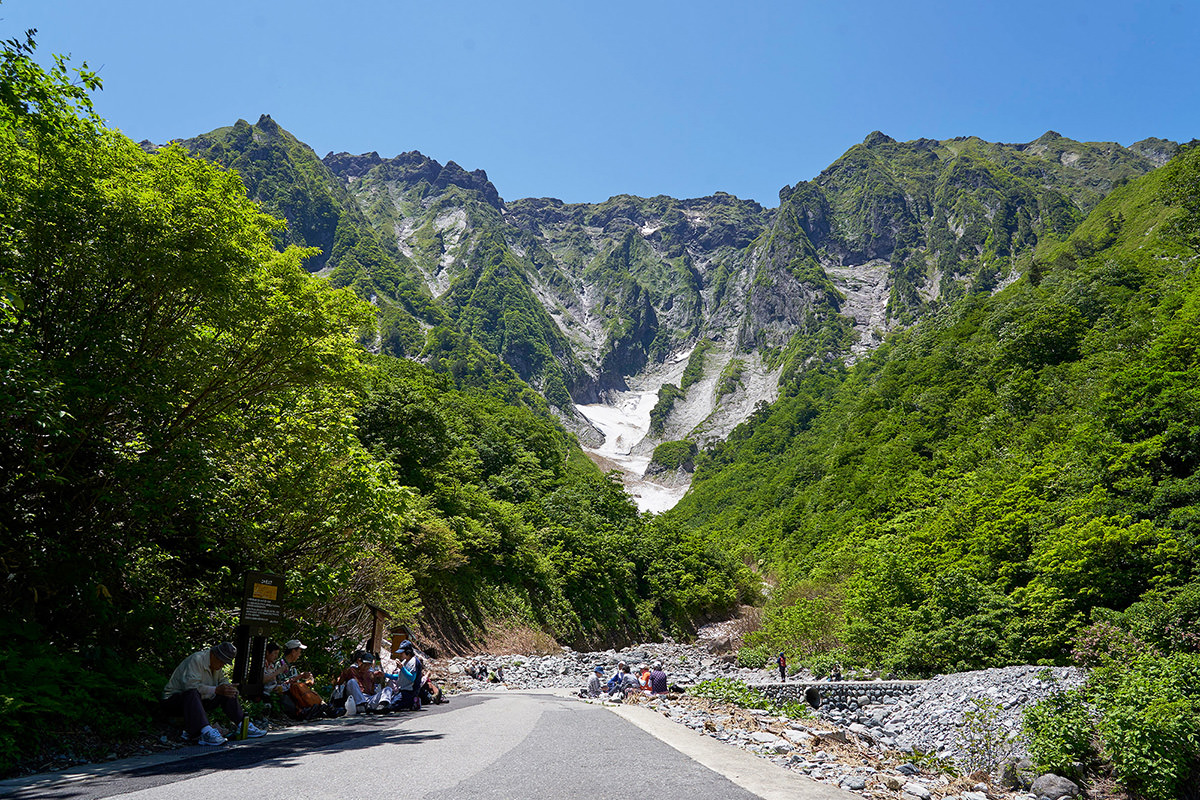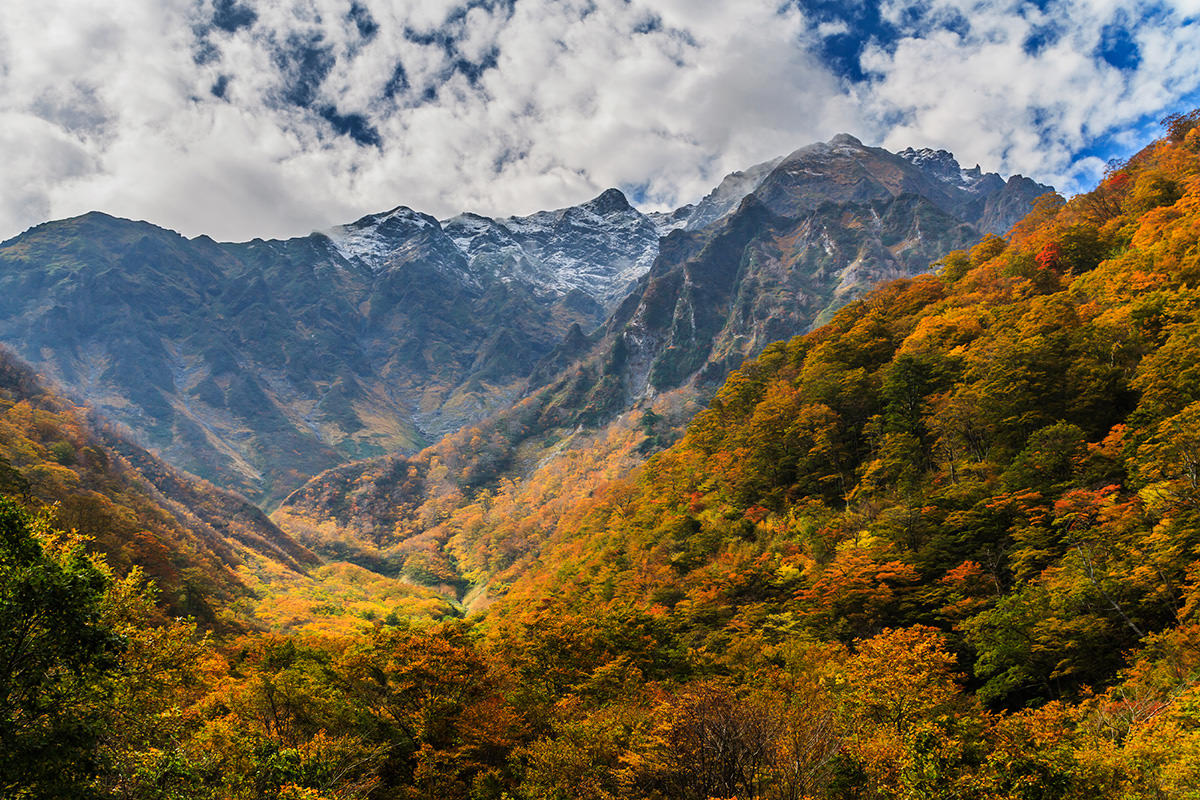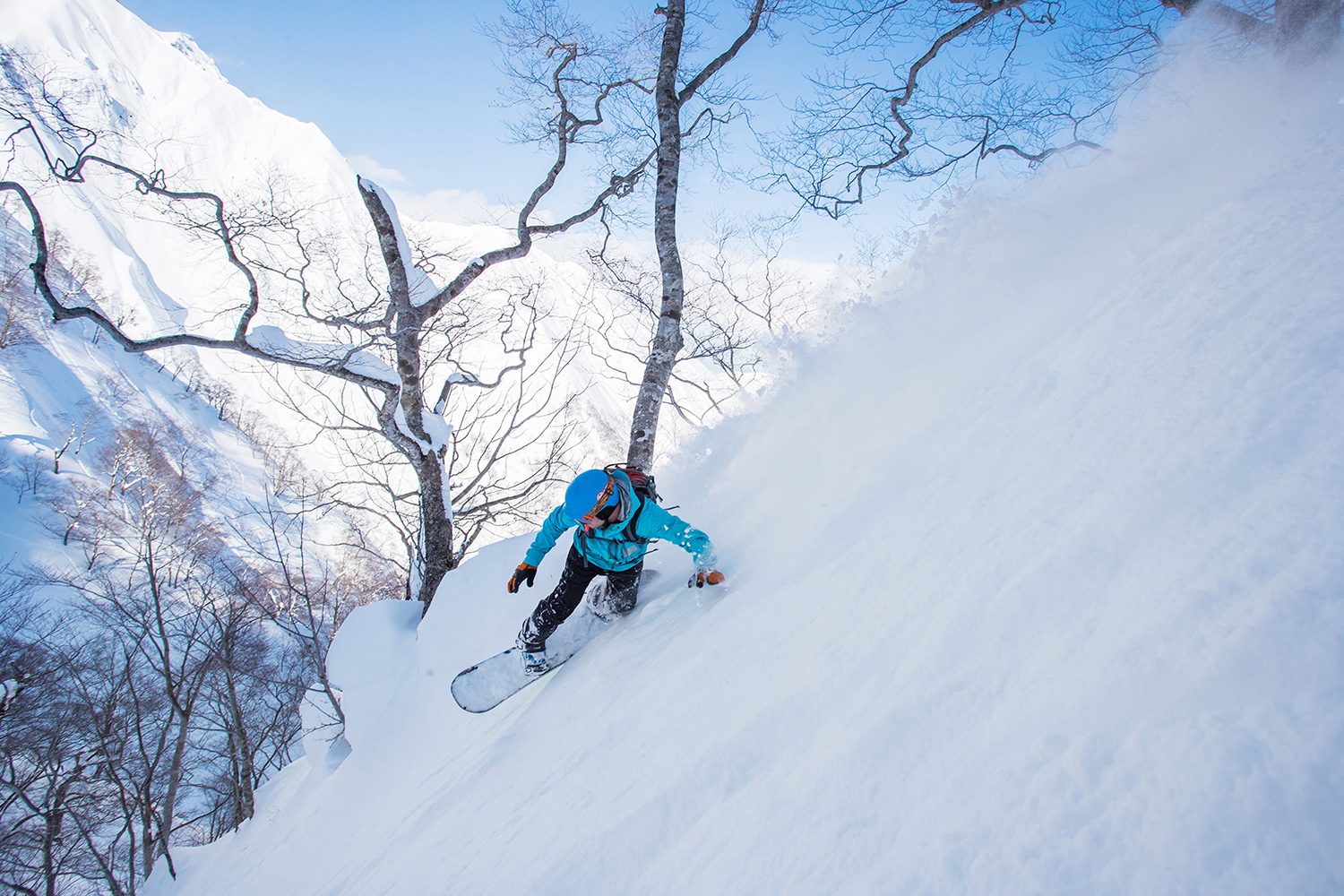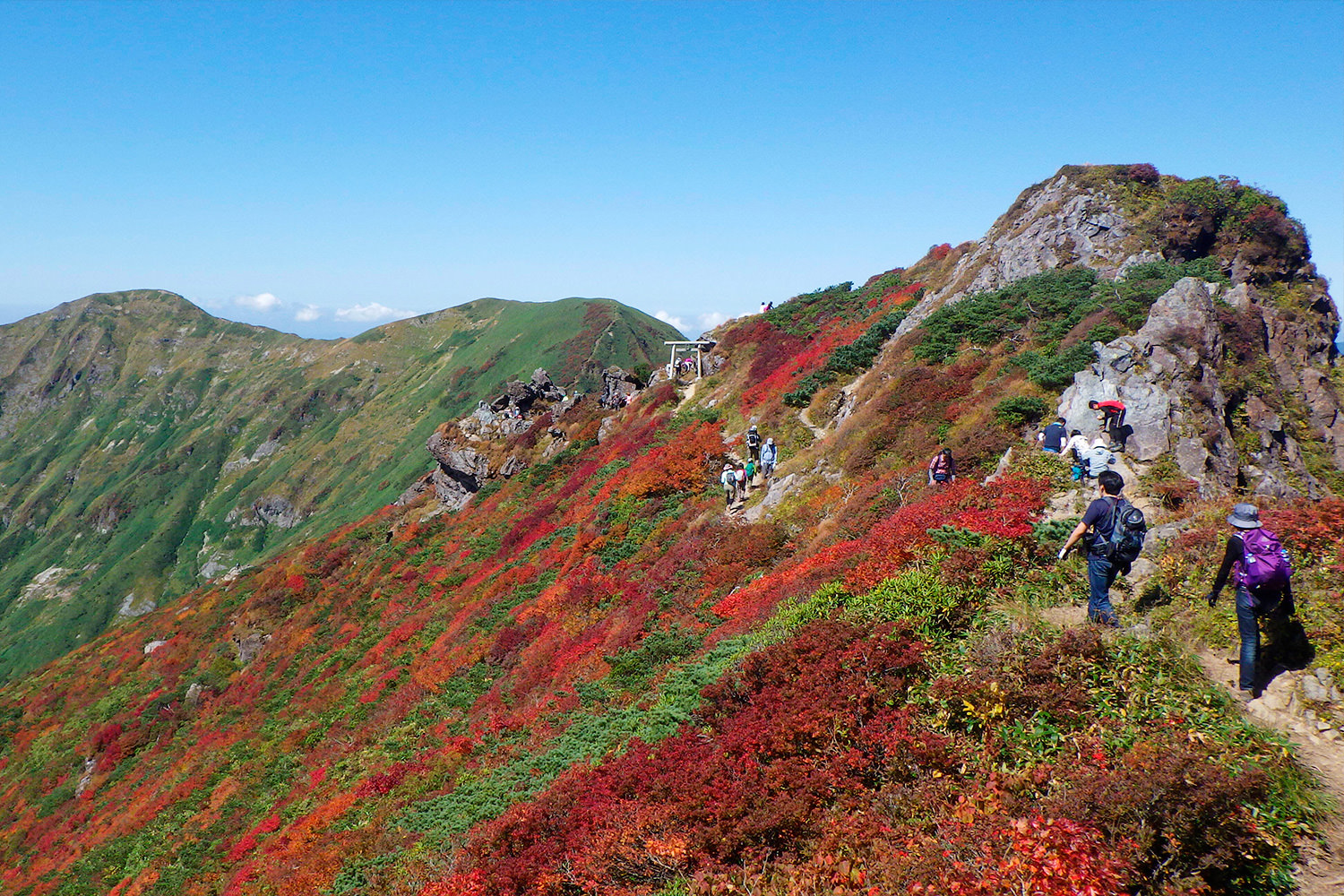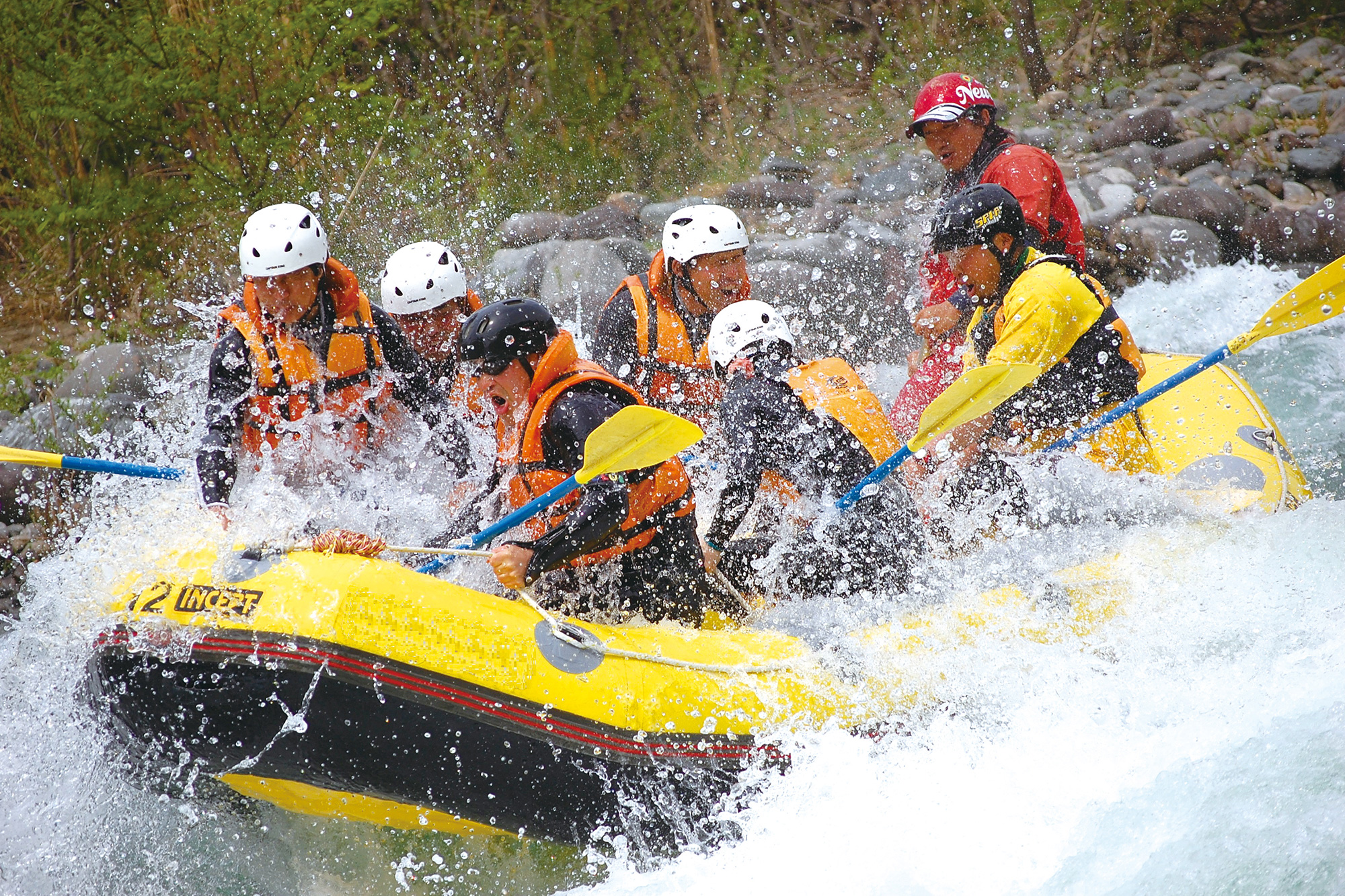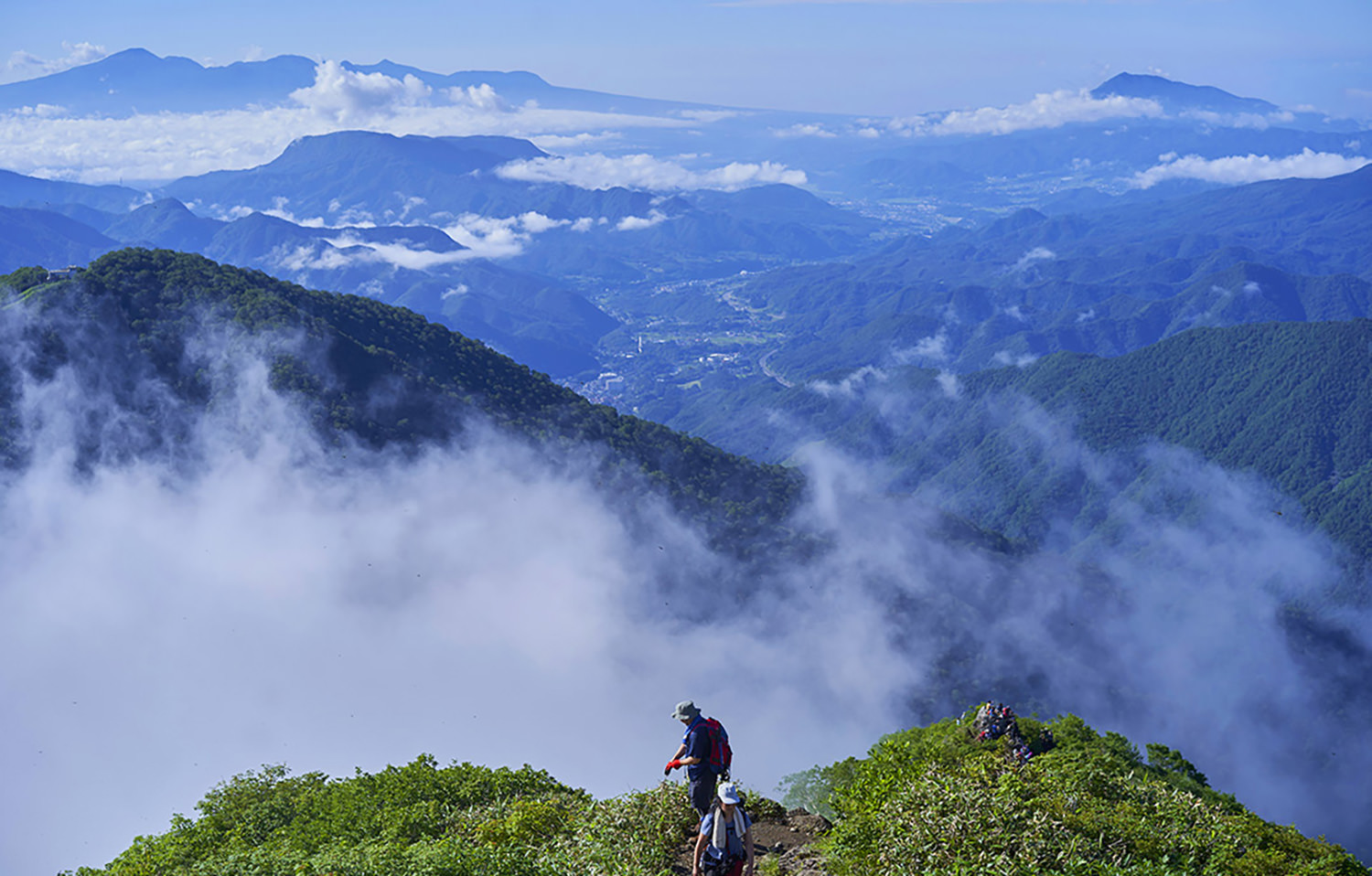For more experienced climbers, the twin peaks of Toma-no-mimi (1,963 m) and Oki-no-mimi (1,977 m) offer a rewarding challenge. This is a 6.4-kilometer round trip from Tenjindaira Station that takes around 5–6 hours to complete. If starting the climb from the Tenjintoge Observation Deck, ring the climbing bell for luck before you set off. Before heading out, ensure you have sufficient water and supplies, and use the bathroom at the ropeway station, as the next facilities are at the Kata-no-koya mountain hut about 10 minutes from the summit.
The climb along the Tanigawadake Ridge features steep, rocky sections and paths covered in wooden planks, which can become slippery, especially after rain. Proper climbing gear, such as sturdy climbing shoes and warm clothing, is essential. On some sections of the route, you will need to scale steep rock faces with ropes and chains. Be cautious, yield to other climbers, and adhere to safety practices.
There are sections where you can catch your breath and enjoy the views, such as the Tengu-no-Tomariba and Tenjin Zange-iwa, an overhanging rock outcrop from where you can survey the ridge. At the summits, climbers enjoy 360-degree views of Gunma and Niigata’s mountain ranges, the Northern Alps, and even Mt. Fuji on especially clear days. In the summer, you can see alpine flowers on the mountain, including yellow Nikko daylily, purple monkshood, and pink fireweed.
Please note that mountain weather is unpredictable, and it’s important to know where to go if there are any sudden changes. Kumanazawa Shelter is an emergency shelter near the trailhead for unexpected situations. Additionally, Kata-no-koya, a mountain hut near the Toma-no-mimi summit, offers toilets, a rest area, and lodging between May and early November, providing a safe stop for climbers.



























